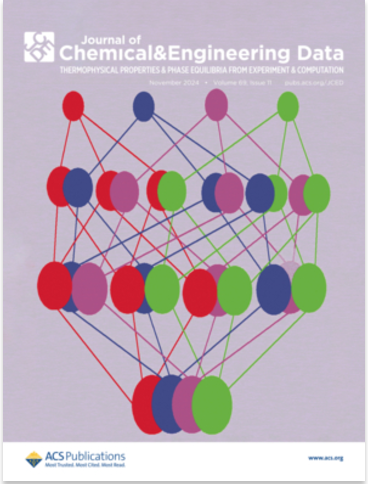贝仑单抗马福多汀联合泊马度胺和地塞米松(BPd)与泊马度胺联合硼替佐米和地塞米松(PVd)治疗复发性/难治性多发性骨髓瘤(RRMM)的随机3期DREAMM-8研究结果。
IF 2.1
3区 工程技术
Q3 CHEMISTRY, MULTIDISCIPLINARY
Journal of Chemical & Engineering Data
Pub Date : 2024-06-10
DOI:10.1200/jco.2024.42.17_suppl.lba105
引用次数: 0
摘要
LBA105 背景:使用三联/四联疗法治疗1L MM提高了首次复发时对新型联合疗法的需求,而贝兰单抗-马福多汀(belamaf)联合疗法可以解决这一问题。在DREAMM-7中,BVd与daratumumab-Vd相比,可显著改善既往接受过≥1次治疗的患者(pts)的无进展生存期(PFS)和总生存期(OS)。我们报告了DREAMM-8 (NCT04484623)的研究结果,该研究测试了不同的贝拉单抗组合(BPd),并在预设的中期分析中达到了独立审查委员会评估的PFS这一主要终点。研究方法DREAMM-8是一项3期、开放标签、随机、多中心试验,评估了BPd与PVd在既往接受过包括来那度胺在内的≥1种治疗方案(LoT)的RRMM患者中的疗效和安全性。患者按 1:1 随机分配到 BPd(28 天周期):贝拉米夫 2.5 毫克/公斤静脉注射(D1,C1),1.9 毫克/公斤(D1,C2+)+ Pom 4 毫克(D1-21,所有 C)+ dex 40 毫克(D1,QW,所有 C),或 PVd(21 天周期):Pom 4 毫克(D1-14,所有 C)+ 硼替佐米 1.3 mg/m2 SC(D1、4、8、11 [C1-8];和 D1、8 [C9+])+ dex 20 mg(硼替佐米用药当天和用药后 1 天)。结果155名患者被随机分配到BPd治疗,147名患者被随机分配到PVd治疗。中位(范围)随访时间为 21.78 个月(0.03-39.23),BPd 与 PVd 的中位 PFS(95% CI)分别为 12.7 个月(9.1-18.5)(HR,0.52;95% CI,0.37-0.73;BPd 和 PVd 两组分别为 99% 和 96%)。在接受 BPd 治疗的患者中,89% 出现眼部 AEs(CTCAE 3/4 级,43%),而在 PVd 治疗组中,30% 出现眼部 AEs(3/4 级,2%)。AEs总体上可控,与已知的单个药物的安全性特征基本一致。结论DREAMM-8研究表明,在既往LoT大于1次的RRMM患者中,BPd与PVd相比具有统计学意义和临床意义的PFS获益。BPd还能带来更深入、更持久的反应,显示出良好的OS趋势,并具有可控的安全性。临床试验信息:NCT04484623 .[表格:见正文]本文章由计算机程序翻译,如有差异,请以英文原文为准。
Results from the randomized phase 3 DREAMM-8 study of belantamab mafodotin plus pomalidomide and dexamethasone (BPd) vs pomalidomide plus bortezomib and dexamethasone (PVd) in relapsed/refractory multiple myeloma (RRMM).
LBA105 Background: Use of triplet/quadruplet therapies for 1L MM raises the need for novel combinations at first relapse, which belantamab mafodotin (belamaf) combos may address. In DREAMM-7, BVd led to a significant improvement in progression-free survival (PFS) and a strong trend in improved overall survival (OS) vs daratumumab-Vd in patients (pts) with ≥1 prior therapy. We report results from DREAMM-8 (NCT04484623), which tested a different belamaf combo (BPd) and met its primary endpoint of independent review committee–assessed PFS at a prespecified interim analysis. Methods: DREAMM-8 is a phase 3, open-label, randomized, multicenter trial evaluating the efficacy and safety of BPd vs PVd in RRMM pts who received ≥1 prior line of therapy (LoT), including lenalidomide. Pts were randomly assigned 1:1 to BPd (28-d cycles): belamaf 2.5 mg/kg IV (D1, C1), 1.9 mg/kg (D1, C2+) + pom 4 mg (D1-21, all C) + dex 40 mg (D1, QW, all C), or PVd (21-d cycles): pom 4 mg (D1-14, all C) + bortezomib 1.3 mg/m2 SC (D1, 4, 8, 11 [C1-8]; and D1, 8 [C9+]) + dex 20 mg (day of and 1 day after bortezomib dose). Results: 155 pts were randomly assigned to BPd and 147 to PVd. With a median (range) follow-up of 21.78 mo (0.03-39.23), median PFS (95% CI) was not reached (NR; 20.6-NR) with BPd vs 12.7 mo (9.1-18.5) with PVd (HR, 0.52; 95% CI, 0.37-0.73; P<0.001). 12-month PFS rate (95% CI) was 71% (63-78%) with BPd vs 51% (42-60%) with PVd. ORR (95% CI) was 77% (70.0-83.7%) with BPd vs 72% (64.1-79.2%) with PVd; rate of complete response or better (95% CI) was 40% (32.2-48.2%) with BPd vs 16% (10.7-23.3%) with PVd. Median duration of response (95% CI) was NR (24.9-NR) with BPd vs 17.5 mo (12.1-26.4) with PVd. A positive trend favoring BPd was seen for OS (HR, 0.77; 95% CI, 0.53-1.14); follow up for OS is ongoing. Adverse events (AEs) were reported in >99% and 96% of pts in the BPd and PVd arms, respectively. Of pts treated with BPd, 89% had ocular AEs (CTCAE grade 3/4, 43%) vs 30% (grade 3/4, 2%) in the PVd arm. AEs were generally manageable, and broadly consistent with known safety profile of individual agents. Conclusions: The DREAMM-8 study demonstrated a statistically significant and clinically meaningful PFS benefit with BPd vs PVd in RRMM with >1 prior LoT. BPd also led to deeper and more durable responses, showed a favorable OS trend, and had a manageable safety profile. Clinical trial information: NCT04484623 . [Table: see text]
求助全文
通过发布文献求助,成功后即可免费获取论文全文。
去求助
来源期刊

Journal of Chemical & Engineering Data
工程技术-工程:化工
CiteScore
5.20
自引率
19.20%
发文量
324
审稿时长
2.2 months
期刊介绍:
The Journal of Chemical & Engineering Data is a monthly journal devoted to the publication of data obtained from both experiment and computation, which are viewed as complementary. It is the only American Chemical Society journal primarily concerned with articles containing data on the phase behavior and the physical, thermodynamic, and transport properties of well-defined materials, including complex mixtures of known compositions. While environmental and biological samples are of interest, their compositions must be known and reproducible. As a result, adsorption on natural product materials does not generally fit within the scope of Journal of Chemical & Engineering Data.
 求助内容:
求助内容: 应助结果提醒方式:
应助结果提醒方式:


